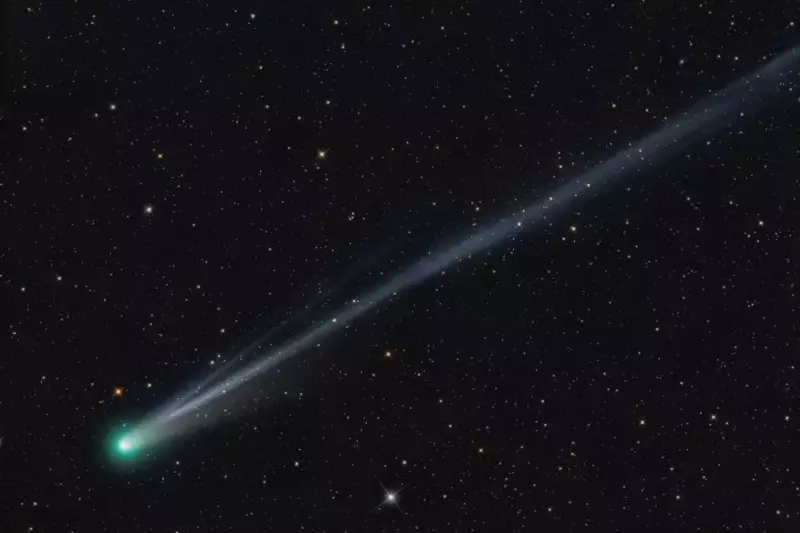
Skywatchers across India are in for a celestial treat this week as two comets—SWAN and Lemmon—make their appearance in the night sky. This rare double feature offers astronomy enthusiasts a unique opportunity to witness these cosmic wanderers with minimal equipment.
When to Catch the Celestial Show
The viewing window for both comets is now open and will remain favorable through the coming days. According to astronomers, the best viewing times occur after midnight when the sky is at its darkest. The moon's waning phase provides ideal dark sky conditions, making the comets easier to spot.
How to Locate Comet SWAN
Comet SWAN (C/2025 K1) is currently the brighter of the two and can be found in the northeastern sky before dawn. Look toward the constellation Taurus, where it appears as a fuzzy patch of light. While visible to the naked eye from dark locations, binoculars will reveal more detail in its faint tail.
Spotting Comet Lemmon
Comet Lemmon (C/2025 L2) presents more of a challenge but is equally rewarding. Positioned in the eastern morning sky, it moves through the constellation Cancer. You'll need binoculars or a small telescope to clearly observe this celestial visitor.
Expert Tips for Successful Viewing
- Escape city lights: Find the darkest possible location away from urban light pollution
- Be patient: Allow your eyes 20-30 minutes to adapt to the darkness
- Use astronomy apps: Star chart applications can help pinpoint exact locations
- Check weather conditions: Clear skies are essential for optimal viewing
- Start with binoculars: Even basic 7x50 or 10x50 binoculars significantly improve the experience
Why This Event Matters
While comets regularly pass through our solar system, having two simultaneously visible to amateur astronomers is relatively uncommon. Comet SWAN was discovered in 2025 through data from the Solar Wind ANisotropies (SWAN) camera aboard the SOHO spacecraft, while Comet Lemmon was detected by the Mount Lemmon Survey in Arizona.
"This is an excellent opportunity for families and budding astronomers to witness these ancient travelers from the outer solar system," says Dr. Priya Sharma, an astrophysicist at the Indian Institute of Astrophysics. "Such events help spark interest in space science and remind us of the dynamic nature of our cosmic neighborhood."
Don't miss this chance to observe these celestial nomads—the next comparable double comet event won't occur for several years. Whether you're an experienced stargazer or simply curious about the night sky, this week offers a perfect excuse to look up and marvel at the wonders above.





